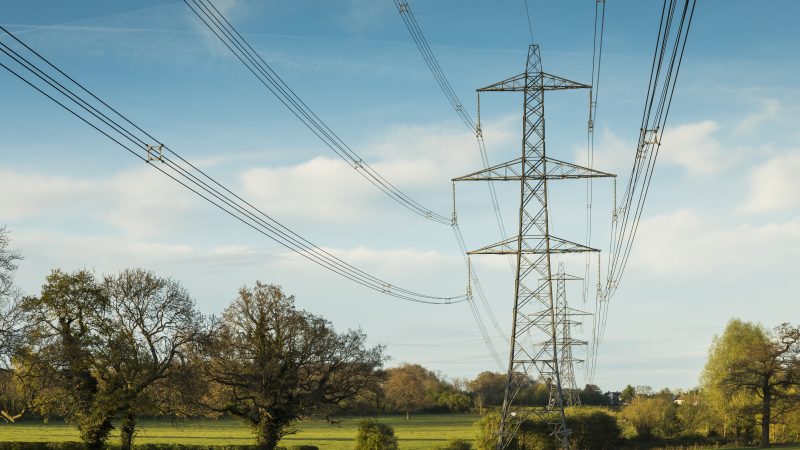
Most people were watching the wave of resignations tally up on their screens as Boris Johnson fruitlessly tried to save his premiership on July 6th. Unbeknown to many, however, the Business Secretary Kwasi Kwarteng announced the eagerly awaited energy bill on that same day. Since COP26, most of the conversation leading up to the bill has quite rightly focused on which sources of energy will receive investment in order to transition to a net-zero society. There is, however, another major issue that needs to be discussed: transmission infrastructure.
Labour has been vocal about using more renewable energies and pushing for a shorter net-zero timeframe. Yet alongside overhauling our reliance on fossil fuels, the party will have to consider a coordinated strategy for linking the power from these new energy sources to our homes and businesses. Paramount to revolutionising our energy sector will be a holistic and sustainable transmission plan.
This will be a momentous task. The transmission grid – the pylon lines, substations, cables, transformers etc. – was curated for a fossil fuel dominant infrastructure. It connects the gas and coal power stations to the grid and from there to our homes. Given Labour’s desire to radically change our energy dependency to renewable sources like offshore wind, an almost entirely new grid will need to be planned to sustainably accommodate this transition, not least because the locations are different.
Alongside building a strategic plan, the Labour Party must also be doing more to scrutinise and hold to account the interim government’s decisions on transmission infrastructure. Not only does the government lack a plan and foresight, but its actions are unsustainable. If the government persists in this poorly orchestrated approach, not only will they obstruct one of the aims of transitioning to renewable energies – preserving and protecting the UK’s environment and wildlife – they will also unnecessarily cost the taxpayer an extortionate amount.
The government’s lack of a clear and coordinated transmission infrastructure plan means that the projects being proposed today will inevitably be over-burdened and inefficient in carrying power from the new energy sources to the grid in the future. Consequently, more projects than necessary will have to be built, increasing the land use and materials, thereby costing the environment and the public more.
This reality is already playing out. Recently, a National Grid substation in Friston, Suffolk was planned to connect two East Anglia offshore wind farms to the National Grid. Despite the location being in an ecologically rich space, the project was signed off by the Secretary of State.
It has now been revealed – although many residents knew beforehand – that several other transmission projects are planned in the same vicinity to siphon off the energy from the Friston substation. The justification for this is that more energy is going to be produced than can be carried along the grid from the one substation.
The cumulative impact of the lack of coordination and foresight will unnecessarily decimate the local environment. In the original plans for the Friston substation, a trench was going to be dug 70 metres wide, stretching nine kilometres from the coast to an inland site in order to lay the cables connecting the offshore wind farms to the substation. New projects to siphon off the excess power include another 70-metre-wide trench, carrying another set of cables back out to sea and under water to Kent. This work will be carried out across protected land and may affect some of the UK’s most endangered wildlife. This irreparable damage is happening because the original project was not sufficient to carry the projected power.
Furthermore, projects like these are nationally significant infrastructure projects (NSIP), which are paid for by the taxpayer. Through a lack of planning and coordination, the cost of the proposed projects in the Friston area will accumulate to millions of pounds more than it should have been.
Perhaps if the government had been committed to transitioning into a net-zero society, it would not have continued at a rate of piecemeal change, but designed and coordinated a concrete plan to save money and the environment. Many alternatives already exist that could have been implemented. One just has to look beyond the East Coast wind farms to see energy islands being built in Denmark, Holland, Belgium and Germany.
Friston is not an isolated project. There are many more projects in England, Wales and Scotland where the same short-sightedness will cause major environmental and economic mayhem. If we are to achieve our goal of net zero, many more renewable energy projects must be commissioned and built.
If the government persists in its uncoordinated approach to transmission infrastructure without the necessary scrutiny and an alternative Labour plan, we could jeopardise the sustainability of our transition to net zero and cost ourselves far more than necessary.




More from LabourList
‘The Employment Rights Bill is a massive step forward – but we’re not done delivering for working people’
‘Britain’s G20 Presidency is Labour’s chance to lead a global reset’
Is Andy Burnham’s star dimming amid repeated hints at leadership ambition?